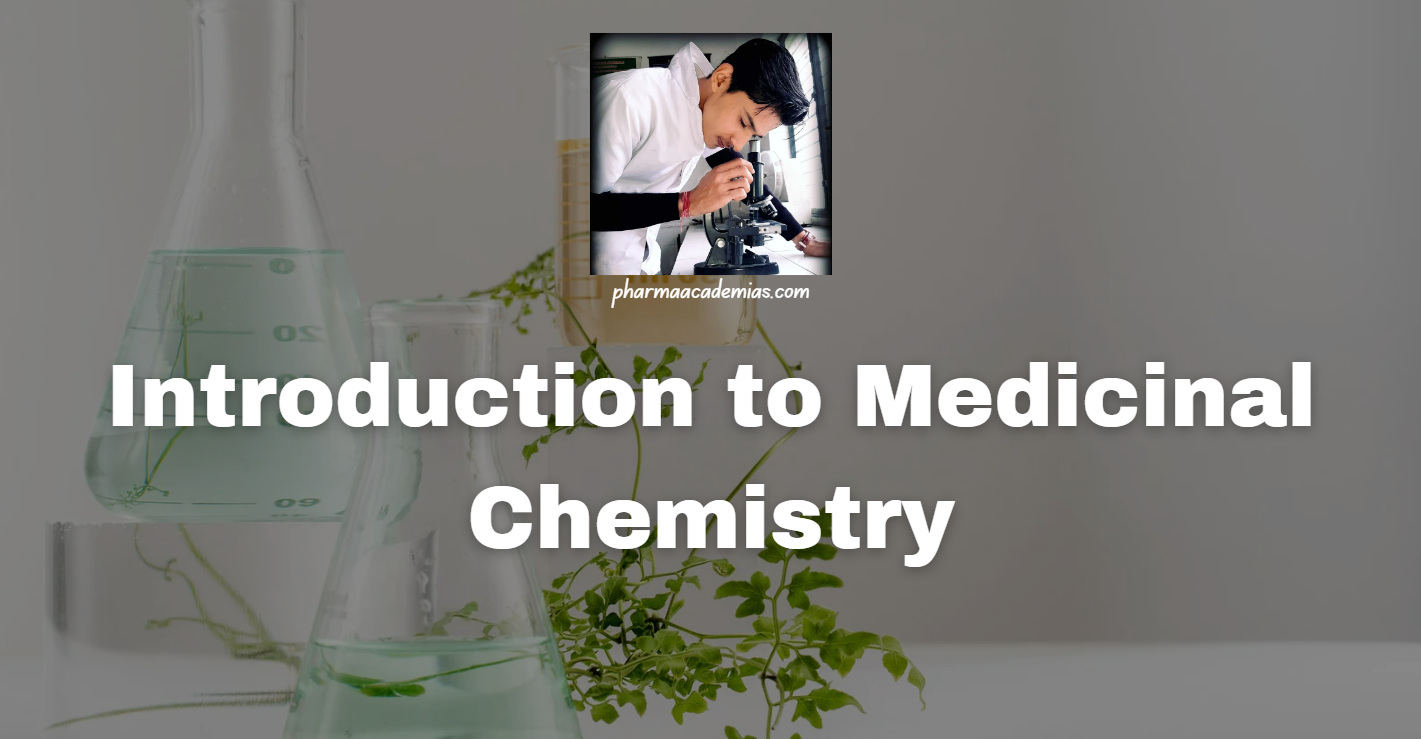Introduction:
Medicinal chemistry is a multidisciplinary field that combines principles of chemistry, biology, and pharmacology to discover, design, develop, and optimize small molecule compounds for therapeutic use. It plays a pivotal role in the discovery and development of drugs to treat various diseases, ranging from infections to cancer. This note aims to provide a detailed overview of medicinal chemistry, including its principles, methodologies, and significance in modern drug discovery.
1. Historical Perspective:
Medicinal chemistry has roots dating back to ancient civilizations, where natural products such as plants and minerals were used for therapeutic purposes. However, the systematic study of medicinal chemistry began in the 19th century with the isolation and synthesis of organic compounds like morphine and aspirin. The advent of modern organic chemistry and the understanding of biological processes further propelled the field’s advancement.
2. Principles of Medicinal Chemistry:
Medicinal chemistry revolves around the following principles:
– Structure-Activity Relationship (SAR): SAR elucidates the relationship between the chemical structure of a compound and its pharmacological activity. It helps medicinal chemists optimize compounds by modifying their structure to enhance potency, selectivity, and safety.
– Drug-Receptor Interaction: Drugs exert their effects by interacting with specific molecular targets, such as receptors, enzymes, or ion channels. Understanding these interactions at the molecular level is crucial for rational drug design.
– ADME Properties: Absorption, distribution, metabolism, and excretion (ADME) properties determine a drug’s pharmacokinetic profile, affecting its efficacy and safety. Medicinal chemists aim to optimize these properties to improve a drug’s bioavailability, distribution, metabolism, and elimination.
– Toxicology: Medicinal chemists consider the potential toxic effects of drugs on various organs and systems. Toxicological studies help identify and mitigate adverse effects during drug development.
3. Drug Discovery Process:
The drug discovery process encompasses several stages:
– Target Identification and Validation: This stage involves identifying disease-relevant molecular targets and validating their role in disease pathology.
– Hit Identification: High-throughput screening (HTS) and virtual screening are employed to identify lead compounds with activity against the target.
– Lead Optimization: Lead compounds undergo iterative chemical modifications to enhance their potency, selectivity, and ADME properties.
– Preclinical Development: Selected lead compounds undergo preclinical studies to assess their safety, pharmacokinetics, and efficacy in animal models.
– Clinical Development: Promising candidates advance to clinical trials, where they are evaluated for safety and efficacy in humans through three phases of testing.
– FDA Approval: Drugs demonstrating safety and efficacy in clinical trials receive approval from regulatory agencies such as the Food and Drug Administration (FDA) for marketing and distribution.
4. Tools and Techniques in Medicinal Chemistry:
Medicinal chemists utilize various tools and techniques to facilitate drug discovery and development:
– Computational Chemistry: Molecular modeling, molecular docking, and quantitative structure-activity relationship (QSAR) analysis aid in rational drug design and virtual screening.
– Combinatorial Chemistry: Combinatorial libraries allow for the rapid synthesis and screening of diverse compound libraries, accelerating hit identification and lead optimization.
– High-Throughput Screening (HTS): HTS platforms enable the screening of large compound libraries against biological targets, facilitating the identification of lead compounds.
– X-Ray Crystallography and NMR Spectroscopy: Structural biology techniques provide insights into the three-dimensional structure of drug targets and their interactions with ligands.
5. Significance of Medicinal Chemistry:
Medicinal chemistry plays a crucial role in modern healthcare and drug discovery for the following reasons:
– Development of Therapeutics: Medicinal chemistry enables the discovery and development of drugs to treat a wide range of diseases, improving patient outcomes and quality of life.
– Drug Repurposing: Medicinal chemists explore existing drugs for new therapeutic indications through drug repurposing, leveraging their known pharmacological profiles and safety profiles.
– Personalized Medicine: Advances in medicinal chemistry contribute to the development of targeted therapies tailored to individual patients based on their genetic makeup and disease characteristics.
– Drug Safety and Efficacy: Through the optimization of drug candidates, medicinal chemistry enhances the safety, efficacy, and tolerability of pharmaceutical agents, reducing adverse effects and improving therapeutic outcomes.
Conclusion:
Medicinal chemistry is a dynamic and interdisciplinary field at the interface of chemistry, biology, and pharmacology. It plays a pivotal role in drug discovery and development, driving innovation in healthcare and contributing to improved treatments for various diseases. With advances in technology and a deeper understanding of molecular mechanisms, medicinal chemistry continues to evolve, shaping the future of medicine and patient care.

